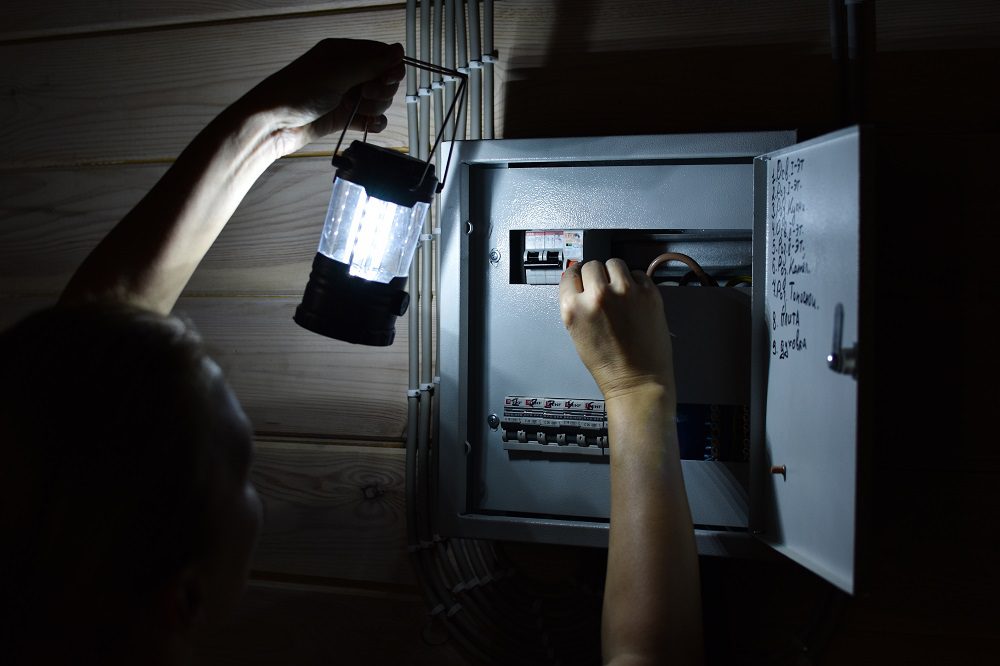
Why Your Outlets Keep Failing in Charlotte’s Older Neighborhoods
Homes in Dilworth, Plaza Midwood, NoDa, Wesley Heights, and Elizabeth have charm that newer builds cannot match. They also have wiring that lived through window AC units, toasters with cloth cords, and decades of “quick fixes.” If outlets trip, spark, or feel loose in these homes, it is rarely random. It is usually a sign of aging materials, outdated protection, or overloaded circuits. Knowing what is hiding behind the faceplate helps protect the house and everyone in it.
Ewing Electric Co. works in older Charlotte housing stock every week. The team sees the same patterns across 1920s bungalows, 1950s ranches, and 1970s splits. This article explains why outlets fail, what symptoms matter, and how a licensed electrician corrects the root issue rather than resetting the same breaker again and again. For searches like electrical wiring Charlotte NC, it also lays out how local codes and Charlotte conditions shape the right repair.
Why outlets fail more often in older Charlotte homes
Many failures come down to age and heat. Copper and brass lose spring tension over time, screws loosen with thermal cycling, and old insulation dries and cracks. Add today’s loads—space heaters, hair dryers, dual monitors—and weak points show fast.
Charlotte has a huge inventory of homes built before modern wiring standards. Some still use two-prong receptacles with no equipment grounding conductor. Others rely on aluminum branch circuits from the late 1960s and early 1970s. Even homes rewired in the 1990s may still have back-stabbed receptacles that loosen. Each condition changes how safe and stable an outlet can be.
Humidity plays a role too. Crawlspaces common in Midwood and Wilmore add moisture, which speeds corrosion at terminals. Summer heat in attics bakes junctions. The result is higher resistance at connections, which creates heat, which loosens them further. That loop ends with melted plastic or a dead outlet.

The usual suspects behind repeated outlet problems
Two-prong receptacles and no ground: Many bungalows still have non-grounded circuits. Phone chargers and lamps run, but appliances with a metal case need a grounding path. Without it, a fault can energize the device and increase shock risk. These outlets also tend to sit on older cable with brittle insulation that fails when disturbed.
Aluminum branch wiring: From about 1965 through the mid-1970s, some Charlotte homes used aluminum for 15- and 20-amp circuits. Aluminum expands and contracts more than copper and oxidizes under the screw. That loosens the connection and increases resistance, which leads to flicker, heat, and outlet failure. It can be made safe with approved repair methods but should be handled by a licensed electrician.
Back-stabbed receptacles: Many receptacles allow wires to be pushed into spring clips on the back. It saves time in new construction but does not age well under heavier modern loads. Movement, heat, and minor corrosion loosen the contact. That produces intermittent power, half-dead outlets on a run, or warm faceplates.
Daisy-chained overloads: A typical older living room might have eight outlets on one 15-amp circuit. Add a space heater and a TV setup with soundbar and game consoles, and the breaker starts tripping. If the breaker never trips but the first receptacle in the chain runs hot, the circuit may be over its comfort zone even if not past its rating on paper.
Loose neutral connections: A loose neutral can mimic a bad outlet. Lights on the same circuit may brighten and dim, and small electronics may fail early. This often shows up in older panelboards or in wire-nut splices in attic junction boxes.
What to watch, hear, and feel
Outlets speak before they fail outright. Subtle signs matter more than a full blackout.
- A plug slides out easily or wiggles. The contacts inside the receptacle are worn and cannot grip. Heat at that point builds quickly with any sizable load.
- The outlet feels warm to the touch without a heavy device plugged in. That points to high resistance at a terminal or back-stab clip and needs attention soon.
- You hear a faint sizzle or see tiny sparks when inserting a plug. That suggests arcing from a loose contact or damaged face. Continued use can char the device.
- Breakers trip when using common appliances like vacuums or space heaters. This can be normal overload, but frequent trips indicate a circuit that needs rebalancing, a bad breaker, or a loose connection upstream.
- GFCI or AFCI outlets trip for no clear reason. Nuisance trips can mean moisture intrusion, shared neutrals, or a failing device. Repeated trips are a diagnostic clue, not something to ignore.
How an electrician isolates the real fault
A good diagnosis saves hours and prevents repeat problems. Ewing Electric Co. follows a clear process on service calls for outlets in older Charlotte neighborhoods.
The electrician starts at the panel, checks labeling, and verifies breaker sizes match wire gauge. They look for double-lugged neutrals or grounds on the same terminal, burnt breaker stabs, and any signs of heat. Next, they test the suspect outlet and the upstream devices feeding it. A quick plug-in tester can flag open grounds or reversed polarity, but a multimeter tells the real story: voltage under load, neutral-to-ground voltage, and drop between outlets on the run.


If aluminum wiring appears, the technician checks device ratings and splices for the proper CO/ALR devices or approved connectors. For two-prong systems, they inspect the cable for a ground path, and if none is present, they offer code-compliant options such as GFCI protection with proper labeling.
Where a circuit is simply overworked, they measure real loads. For example, a 1,500-watt space heater pulls about 12.5 amps by itself. Add a TV and lighting and a 15-amp circuit is running hard. In those cases, a new dedicated circuit is often the most reliable fix.
Repair options that actually hold up
Replacing a worn receptacle with a high-quality, specification-grade device makes an immediate difference. These devices have stronger contacts and better screw terminals. On copper wiring, electricians prefer side-screw terminations or back-wire clamp designs, not push-in back-stabs.
For aluminum electrical wiring near me branch circuits, the repair must follow recognized methods. Two common approaches are CO/ALR receptacles on aluminum conductors or copper pigtails joined to aluminum with an approved connector and antioxidant compound. The pigtail method is common because it allows use of durable copper-only devices downstream.
On non-grounded two-wire circuits, a GFCI receptacle or a GFCI breaker adds protection even without a grounding conductor. The device must be labeled “No Equipment Ground” and downstream outlets on that GFCI load side should be labeled the same. Where kitchens, baths, laundries, garages, and exterior locations are involved, current code requires GFCI protection; many areas also now call for AFCI protection in living spaces. In older Charlotte homes, combining GFCI and AFCI protection through the panel or a combination device can address both shock and arc-fault risks while keeping the original walls intact.
If repeated trips or warm outlets trace to load, running a new 20-amp dedicated circuit for space heating, a workshop bench, or a home office is a straight fix. In Plaza Midwood condos and duplexes, this often means a short run from the panel to the target room. In Dilworth bungalows with plaster walls, an electrician may use the basement or crawlspace for cleaner routing and minimal patching.
Local code and practical realities in Mecklenburg County
Permits and inspections apply to most new circuits and significant repairs. Mecklenburg County Code Enforcement typically turns residential electrical permits around quickly, and inspections can be scheduled within a short window. Older homes with knob-and-tube or mixed wiring may call for partial rewiring to meet safety requirements in areas being altered. AFCI and GFCI requirements can vary by project scope. A licensed contractor who works daily in Charlotte understands how to meet safety standards while keeping costs reasonable.
Weather matters here too. GFCI protection on exterior and crawlspace outlets is essential, and weather-resistant receptacles hold up better in South End townhomes with patios and rooftop decks. In garages, GFCI and often AFCI protection apply, which helps where power tools and EV chargers increase circuit stress.
How to prevent the next failure
Small habits help stretch the life of both outlets and wiring without major work.
- Retire space heaters on old 15-amp living room circuits. Use a dedicated 20-amp circuit or central heat instead for peak months.
- Replace dollar-bin receptacles with specification-grade devices. The better spring tension alone reduces heat and nuisance trips.
- Limit cube taps and cheap power strips. If four devices need power in one corner, a new receptacle or an added circuit is the clean fix.
- Test GFCIs twice a year. If a GFCI will not reset, replace it rather than bypassing it.
- Keep heavy loads off back-stabbed devices. If unknown, plan an audit and upgrade the worst offenders.
What a professional visit looks like and what it costs
Most outlet failures can be diagnosed in under an hour. A straightforward receptacle replacement on copper wiring typically runs within a modest service fee plus parts. Aluminum repairs take longer due to proper connectors and testing. Adding a dedicated 20-amp circuit for a heater or office equipment usually takes half a day in an accessible crawlspace or basement, longer in finished spaces with limited access.
Ewing Electric Co. gives upfront pricing after a quick on-site assessment. The team carries CO/ALR devices, GFCIs, high-grade receptacles, AFCI/GFCI breakers, and the test gear to find hidden faults. The goal is to stop the cycle of warm outlets, flicker, and tripped breakers with fixes that align with current standards for electrical wiring Charlotte NC.
When to call an electrician immediately
There are a few red flags that should not wait until next week. If an outlet faceplate is hot, the breaker trips and will not reset, you smell burning near a receptacle, or you see soot on a device, cut power and call a licensed electrician. The same goes for repeated GFCI or AFCI trips on a dry day, tingling from a metal appliance, or lights that surge when a device starts. These are common in older Charlotte homes and respond well to correct repairs, but they are warning signs.
Local, practical help for Charlotte’s older neighborhoods
Historic charm should not come with shock hazards and surprise outages. Whether the house sits on Hawthorne Lane or along Woodlawn Road, a short visit can reveal whether the issue is worn receptacles, aluminum connections, missing grounding, or overloaded runs. Ewing Electric Co. focuses on clear diagnostics, clean repairs, and solutions that respect plaster walls and original trim while meeting today’s safety requirements.
To schedule a diagnostic or request pricing for outlet repairs, GFCI/AFCI upgrades, or new dedicated circuits, contact Ewing Electric Co. The team works across Charlotte and nearby communities and brings deep experience with the unique wiring found in these homes. If the search is for electrical wiring Charlotte NC, this is the kind of visit that stops guesswork and brings reliable power back to every room.
Ewing Electric Co provides dependable residential and commercial electrical services in Charlotte, NC. Family-owned for over 35 years, we handle electrical panel upgrades, EV charger installation, generator installation, whole-home rewiring, and 24/7 emergency repairs. Our licensed electricians deliver code-compliant, energy-efficient solutions with honest pricing and careful workmanship. From quick home fixes to full commercial installations, we’re known for reliable service done right the first time. Proudly serving Charlotte, Matthews, Mint Hill, and nearby communities. Ewing Electric Co
7316 Wallace Rd STE D Phone: (704) 804-3320 Website:
https://ewingelectricco.com/ |
Electric Company in Charlotte
Social:
Facebook |
Instagram |
Twitter |
LinkedIn |
Yelp |
Angi |
BBB
Map: View on Google Maps
Charlotte,
NC
28212,
USA